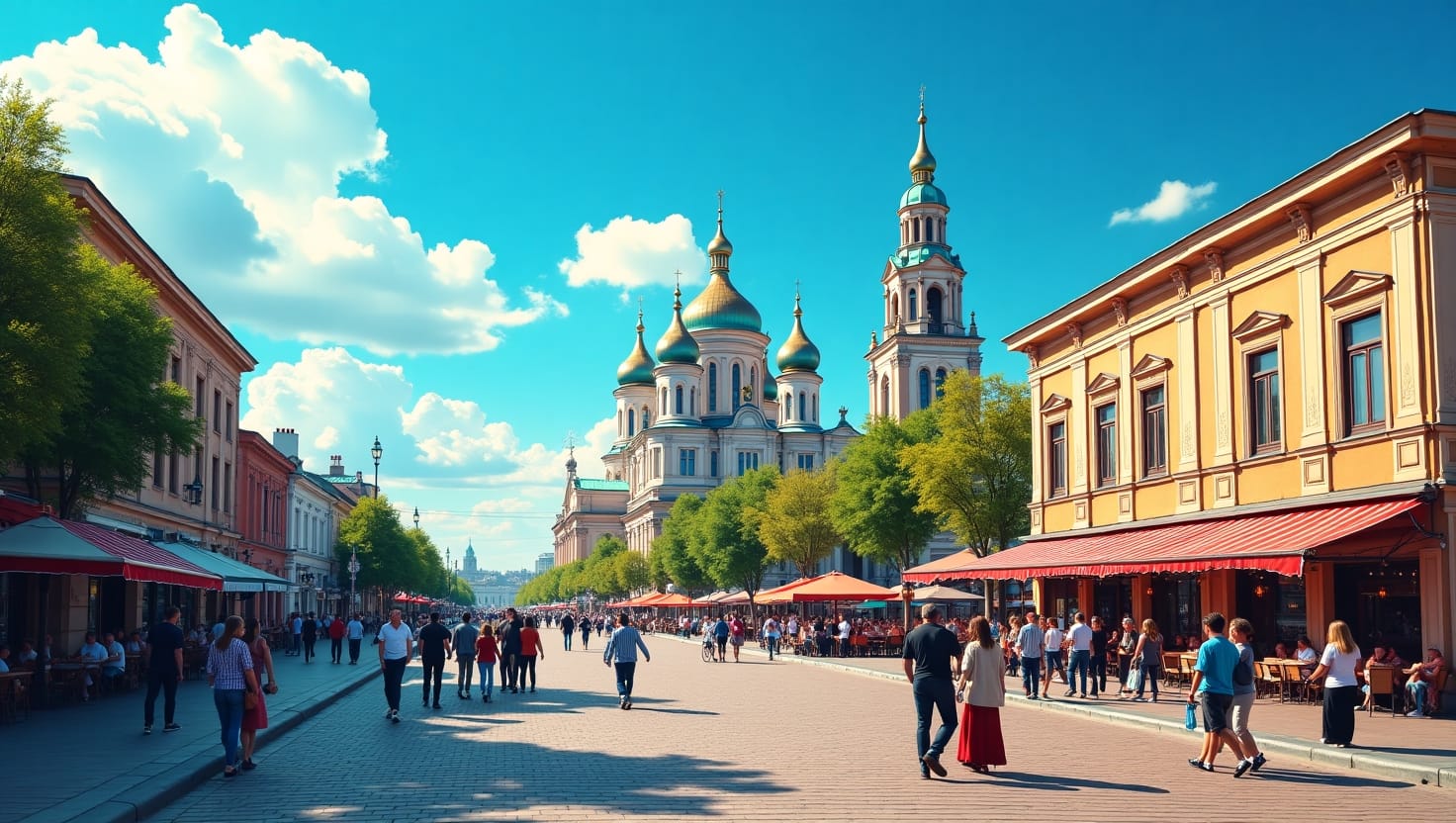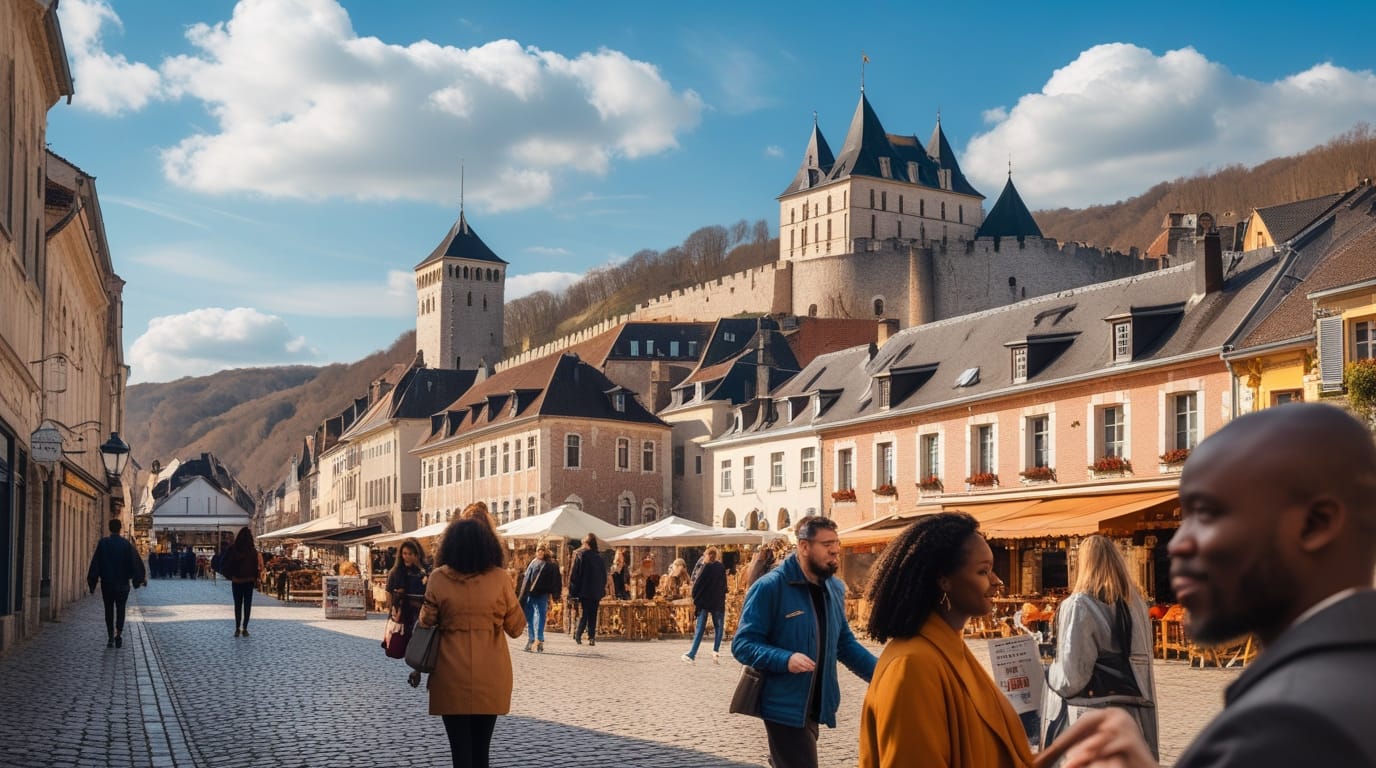Discovering Minsk: A Fascinating Blend of History, Culture & Modern Charm
Introduction
Minsk, the capital of Belarus, is a city where Soviet grandeur meets contemporary vibrancy. With its wide boulevards, striking Stalinist architecture, and a thriving arts scene, Minsk offers a unique travel experience often overlooked by mainstream tourism. Whether you’re drawn to Minsk attractions, intrigued by Belarusian traditions and culture, or eager to explore the Minsk art scene, this city has something for everyone.
1. Minsk Architecture: A Journey Through Time
Minsk’s skyline tells the story of its turbulent past and resilient spirit. Nearly destroyed in World War II, the city was rebuilt in a grand Soviet style, with imposing structures and vast public spaces.
Key Architectural Highlights:
✔ Independence Avenue (Praspiekt Niezaliežnasci) – One of Europe’s longest streets, lined with Stalinist buildings and bustling cafes.
✔ National Library of Belarus – A futuristic diamond-shaped marvel with an observation deck.
✔ Church of Saints Simon and Helena (Red Church) – A stunning neo-Gothic landmark.
✔ KGB Headquarters – A chilling reminder of Soviet-era control, still in use today.
Pro Tip: Take a Minsk sightseeing tour to fully appreciate the mix of Baroque, Stalinist, and contemporary designs.
2. The Minsk Art Scene: Where Tradition Meets Avant-Garde
While Minsk may not be as famous as Paris or Berlin for art, its creative scene is thriving.
Must-Visit Art Spots:
🎨 Museum of Modern Art – Showcases contemporary Belarusian artists.
🎨 Ў Gallery – A hub for experimental art and cultural events.
🎨 Street Art in Zybitskaya Street – Vibrant murals and hipster cafes.
Belarusian art often reflects Belarusian folk traditions, blending rural motifs with modern themes.
3. Belarusian Flag History: Symbols of National Pride
The Belarusian flag features a striking red and green design with an embroidered ornamental pattern on the hoist side.
- Historical Roots: The current flag was adopted in 1995, reviving elements from Soviet-era symbolism while incorporating traditional Slavic patterns.
- Meaning Behind the Colors:
- Red = Courage & sacrifice
- Green = Forests & nature
- Ornamental stripe = Cultural heritage
Fun Fact: Belarus is one of the few countries that still uses a Soviet-style flag.
4. Belarusian Traditions & Culture: A Living Heritage
Belarusians take pride in their folk traditions, which include:
- Kupalle Festival – A midsummer celebration with flower wreaths and bonfires.
- Maslenitsa – A Slavic pancake feast before Lent.
- Vyshyvanka (Traditional Embroidery) – Worn during festivals.
Where to Experience It:
- Dudutki Open-Air Museum – Try blacksmithing, baking, and folk dancing.
- National Academic Folk Orchestra – Hear traditional Belarusian music.
5. Top Minsk Attractions: What Not to Miss
Here’s a quick bucket list for your Minsk trip:
🏛 Island of Tears – A moving war memorial.
🍻 Stolovaya No. 1 – A Soviet-style canteen for budget eats.
🌳 Gorky Park – Perfect for cycling and relaxation.
🛍 Komarovka Market – Taste local cheeses and honey.
6. Unique Day Trips from Minsk
- Mir Castle – A UNESCO-listed medieval fortress.
- Nesvizh Palace – A stunning Renaissance-era estate.
- Berezinsky Biosphere Reserve – For nature lovers.
7. Belarusian Cuisine: A Taste of Tradition
Don’t leave without trying:
- Draniki (potato pancakes)
- Khaladnik (cold beet soup)
- Krambambula (herbal liqueur)
Why Minsk Deserves Your Attention
Minsk is more than just a post-Soviet city—it’s a place where history, art, and tradition collide in fascinating ways. Whether you’re marveling at its architecture, diving into Belarusian folk traditions, or uncovering the Minsk art scene, this city will surprise you at every turn.
Ready to explore? Book a Minsk sightseeing tour and see it for yourself!





Leave a Reply